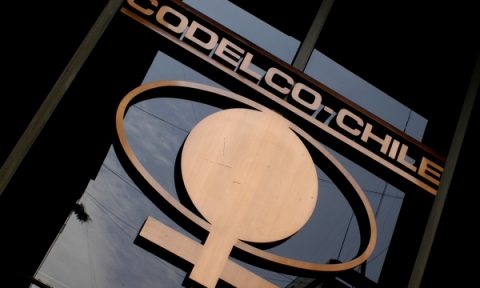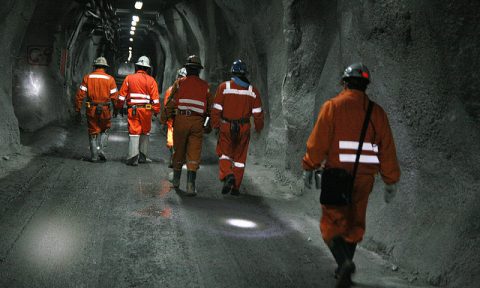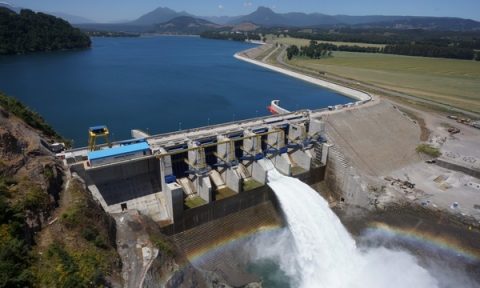Colbún warns important energy deficit between 2014 and 2020 for lack of projects
Electric Company from Matte group argues that 2020 will be a shortfall of 33% of the competitive additional energy required and more than a third of the CNE work plan projects still not built and nearly a quarter has no sponsor
A significant competitive energy deficit faced Chile between 2014 and 2020. That’s the diagnosis that worries Colbun the Matte group’s power Company and partner of Endesa in the project HydroAysén. Firm’s calculations show that even if 100% compliance in the work plan prepared by the National Energy Commission (CNE), the electrical system will not have all the energy efficient you need to supply the increased demand that country will require the end of the decade. Specifically, there will be a deficit close to 33% of that extra demand.
According to their estimates, today there is an imbalance between supply and demand, due to the lack of new projects, making it impossible to supply the additional 2,700 megawatts (MW) require by 2020 to ensure the supply of main power system of the country, the SIC, ranging from Taltal to Chiloe, which supplies more than 90% of the population.
The operator conducted a study unveiled at the Elecgas power seminar last May. That states that in planning for 2014-2020, the CNE is expected that electricity demand will grow at a compound annual rate of 5.3%, ie increase by 21,600 gigawatts / hour (GWh), from the current 48,700 GWh year to 70,300 GWh in 2020, growth is equivalent to seven times the power consumption of Valparaiso. The problem is that supply the same year, just increase by 14,500 GWh. Therefore, shortage of 7,100 GWh.
“We’re looking to be an energy deficit of 33%, that now we do not know if it will be covered,” says Colbún’ s general manager, Ignacio Cruz. Indeed. He says that this imbalance may be greater if the period is no shortage of rain. The electrical Company’s analysis only considers as a reference years with normal rainfall. “If we go to a drier hydrology, tripling the deficit,” he says.
Share Vision
The diagnosis of Colbún is shared in the electricity sector. The former executive secretary of the CNE and current general manager of the Energy consultant, María Isabel González, said that this scenario triggers a stalemate. “The industrial and mining projects that were designed to come into operation by the end of the decade will not because they have no power (competitive). The conclusion is that the worst business as a country is to reject efficient electrical projects”, says. In her view, the situation became more complex first with the rejection of the construction of coal plants Barrancones, GDF Suez, and then Castilla,from Eike Batista and the German E.ON. “While they are not getting new projects, the problem is that housing demand will continue to grow. Then, the system will become increasingly tight and that will trigger that prices remain high, as it will have to generate with diesel “anticipates Gonzalez.
The Electroconsultores partner, Francisco Aguirre, notes that the CNE Works plan is only estimated, ie the power companies are not required to comply. But equally shares the concern about the mismatch between supply and demand. The concern, he says, does not focus on the lack of electricity supply, which is achieved with diesel and higher natural gas-states, but in the cost. An old diesel engine, exemplifies, has a generation cost over U.S. $ 300 per MWh, while more efficient one between U.S. $ 220 to U.S. $ 230 MWh. These values are far from the U.S. $ 40 to U.S. $ 60 per MWh from a coal-fired plant and $ 160 MWh of combined cycle power plant (using natural gas). “This only shows that we have a system misfit” he says.
Ignacio Cruz believes it is necessary that all the growth in demand to be supplied with competitive and sustainable energy. “If not, we’ll get to 2020 with a significant amount of energy that must be provided by way of diesel operations. That means having extremely expensive and energy prices, in turn, contaminates. As a result, the country will be faced with a situation that will continue to lose competitiveness, “he says.
Projects without a sponsor
An additional factor that could increase the deficit projected by 2020, according Colbún, is that 22% of projects that estimates the CNE in its work plan is not associated with a company. “There are a significant number of projects which are bets that do not have a sponsor known and are not clearly identified,” says Cruz. Along with this, 38% of the planning authority does not yet started to build and only 7% of these projects is under construction.
Aguirre endorses that view. He notes that the CNE “is very optimistic commissioning of projects that do not exist, not in the portfolio of private or, straight, not going to develop these”. A concrete example, he adds, is that several years ago the CNE is closing Taltal thermal cycle of Endesa for making better use of natural gas burning and raise energy that can be generated. However, electricity company has not yet manifested its intention to invest in the process.
Another element to note is that there are currently 8,500 MW of energy that could not be built to be prosecuted. “It’s part of the problems we have today and that we must solve. I do not think that is a good scenario we have projects submitted to the evaluation system, passing through all its processes, to finally get to a stage where there is a prosecution that eventually stop investments “emphasizes Cruz.
Solutions
One of the solutions Colbún’s executive envisions for the development of new projects is that companies come early to the communities. He explains that the company acted in this way for the development of the Angostura hydroelectric plant (316 MW), the unit that later this year will enter the electrical system.
“This is key to that after the approval process of the project comes to fruition, leaving open space for further prosecution,” he says.
For the executive, there are still several steps the authority should take to lower the uncertainty when investing in Chile. In terms of environmental regulation, he says, you have to clarify the definition of “major impacts” that a project generates in a community, so there are no interpretations that accommodate to a prosecution.
Besides he considers that it is important that projects are approved with some communities consent. While recognizing that the government has made an effort to accelerate necessary bills for the electricity sector, believes that we are still far from a clear energy policy (see below interview).
To Colbún this definition is relevant, since the firm will provide about 30% of the energy the country needs between 2014 and 2020. It is 517 MW to come from the hand of the second coal unit in Santa Maria (342 MW) unit according to the CNE planning should start operations in 2018.
Cruz says that are currently doing technical analysis for the unit to be more efficient than the first plant, which began operating this year. They are also conducting a social analysis for the project has the approval of the community. For that, the power Company began to speak to the surrounding population to the initiative. Where they have not discussed it is with the community near San Pedro hydroelectric power station (144 MW). The unit, which the CNE should start operating in 2017, is paralyzed, due to new studies being done after discovering a flaw in the engineering of the work.
Studies, says the executive, should lead this year to re-enter environmental processing. “We are making a diligent and detailed work to generate the best decision we leave absolutely calm and so we can let everyone calm” says.
Source: La Tercera












